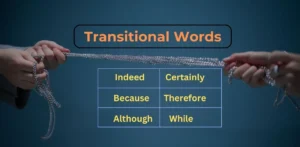The Syllabus for COPA trade which means Computer Operator and Programming Assistant is a 1-year course divided into 2 Semesters.
This is a simple and modified COPA ITI Syllabus so that you can understand it more easily and download it as a Free PDF.
COPA Syllabus Overview
1. First Semester
- Safe Working Practices
- Computer Components
- Windows Operating System
- Computer Basics
- DOS & Linux Operating Systems
- MS Office
- MS Excel
- MS PowerPoint & Image Editing
- Database Management Systems
- Computer Networks
- Internet Concepts
2. Second Semester
- JavaScript
- VBA (Visual Basic for Applications)
- Accounting
- E-Commerce
- Cybersecurity
1. First Semester
1. Safe Working Practices
- Scope of the COPA trade.
- Safety rules and safety signs.
- Types and working of fire extinguishers.
2. Computer Components
- Introduction to the computer system.
- Concepts of Hardware and Software.
- The function of motherboard components and various processors.
- Various Input/Output devices in use and their features.
3. Windows Operating System
- Introduction to the operating system.
- Main features of Windows OS.
- Concept of various shortcut commands.
4. Computer Basics
- Introduction to the booting process.
- Introduction to various types of memories and their features.
- Basic Hardware and software issues and their solutions.
- Usage of Application software and Antivirus.
5. DOS & Linux Operating Systems
- Introduction to basic DOS Internal and External Commands.
- Introduction to Open Source Software.
- Introduction to Linux Operating System features, structure, files, and processes.
- Basic Linux commands.
6. MS Office
- Introduction to the various applications in MS Office.
- Introduction to Word features, Office button, toolbars.
- Creating, saving, formatting, and printing documents.
- Working with objects, macro, and mail merge.
- Templates, and other tools in Word.
7. MS Excel
- Introduction to Excel features and Data Types.
- Cell referencing and linking Sheets.
- Introduction to various functions in all categories of Excel.
- Concepts of sorting, filtering, and validating data.
- Analyzing data using charts, data tables, pivot tables, goal seek, and scenarios.
8. MS PowerPoint & Image Editing
- Introduction to the properties and editing of images.
- Introduction to different formats of images and their uses.
- Introduction to PowerPoint and its advantages.
- Creating Slide Shows.
- Fine-tuning the presentation and good presentation technique.
9. Database Management Systems
- Concepts of Data and Databases.
- Overview of popular databases, RDBMS, OODB, and NOSQL.
- Rules for designing good tables.
- Relationships in tables.
- Introduction to various types of Queries and their uses.
- Designing Access Reports and Forms.
- Introduction to macros, designer objects controls, their properties, and behavior.
10. Computer Networks
- Introduction to Computer Networks, Necessity, and Advantages.
- Client Server and peer to Peer networking concepts.
- Concept of Proxy Server and proxy firewall server.
- Concept of DHCP Server.
- Network topologies.
- Introduction to LAN, WAN, and MAN.
- Network components, viz. Modem, Hub, Switch, Router, Bridge, Gateway, etc.
- Network Cables, Wireless networks, and Bluetooth technology.
- Concept of ISO – OSI 7 Layer Model.
- Overview of various Network protocols Viz. TCP/IP, FTP, Telnet, etc.
- Concept of Logical and Physical Addresses, Subnetting, and Classes of Networks.
11. Internet Concepts
- Introduction to www, Concept of the Internet.
- Web Browsers, internet servers, and search engines.
- Concepts of Domain naming Systems and E-mail communication.
- Introduction to video chatting tools and Social Networking concepts.
- Concepts of Static and Dynamic Web Pages.
- Introduction to HTML and various tags in HTML.
- Concepts of different controls used in Web Pages.
- Concepts of CSS and applying CSS to HTML.
- Introduction to open-source CMS viz, Joomla, WordPress, etc.
- And Web authoring tools viz. Kompozer, Front Page, etc.
- Concept of good web page designing techniques.
2. Second Semester
1. JavaScript
- Introduction to Programming and Scripting Languages.
- Introduction to JavaScript and its application for the web.
- Introduction to Web Servers and their Features.
- JavaScript Basics – Data types, Variables, Constants, and Conversion between data types.
- Arithmetic, Comparison, Logical Operators in JavaScript. Operator precedence.
- Program Control Statements and Loops in JavaScript.
- Arrays in JavaScript – concepts, types, and usage.
- The String data type in JavaScript. Introduction to String, Math, and Date.
- Introduction to Functions in JavaScript.
- Built-in JavaScript functions overview.
- Concepts of Pop-Up boxes in JavaScript.
- Introduction to the Document Object Model.
- Concepts of using Animation and multimedia files in JavaScript.
2. VBA (Visual Basic for Applications)
- Introduction to VBA features and applications.
- Properties, events, and methods associated with the Button.
- Check Box, Label, Combo Box, and Group Box.
- Option Button, List Box, Scroll Bar, and Spin button controls.
- VBA Data Types, Variables, and Constants.
- Operators in VBA and operator precedence.
- Mathematical Expressions in VBA.
- Introduction to Arrays in VBA.
- Introduction to Strings in VBA.
- Conditional processing in VBA, using the IF, Else-if, and Select Case Statements.
- Introduction to Loops in VBA.
- VBA message boxes and input boxes.
- Introduction to Creating Functions and Procedures in VBA.
- Using the built-in functions.
- Introduction to Object-Oriented Programming Concepts.
- Concepts of Classes, Objects, Properties, and Methods.
- The user forms and control in Excel VBA.
- Introduction to Debugging Techniques.
3. Accounting
- Basics of Accounting, Golden Rules of Accounting, Voucher Entry, Ledger Posting, Final Accounts Preparation.
- Cash Book. Ratio Analysis, Depreciation, and Stock Management.
- Analysis of VAT, Cash Flow, and Fund Flow Accounting.
- Introduction to Tally, features, and Advantages.
- Implementing accounts in Tally.
- Double entry system of bookkeeping.
- Budgeting Systems, Scenario Management, and Variance Analysis.
- Costing Systems, Concepts of Ratios, Analysis of financial statements.
- Inventory Basics, POS Invoicing, TDS, TCS, FBT, VAT & Service Tax.
- Tally Interface in Different Languages.
4. E-Commerce
- Introduction to E-Commerce and Advantages.
- Building a business on the net.
- Payment and Order Processing, Authorization, Chargeback, and other payment methods.
- Security issues and payment gateways.
5. CyberSecurity
- Overview of Information Security, SSL, HTTPS, Security threats, information Security vulnerability, and Risk management.
- Introduction to Directory Services, Access Control, Security, Privacy protection, Audit, and Security.
- Introduction to IT Act and penalties for cyber crimes.
COPA Syllabus PDF
Here is a free COPA PDF file to download.
Conclusion:
With the COPA ITI syllabus at your disposal, you can embark on an exciting journey of learning and skill development. Acquire proficiency in computer operation, programming, and web development, and open doors to a world of opportunities in the ever-expanding digital landscape.




